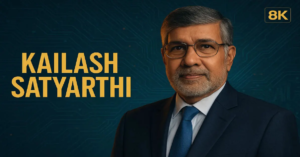Shirin Ebadi: The Unbroken Whisper Defying Iran’s Gender Apartheid (2024)
The Tea That Went Cold: Shirin Ebadi Unfinished Revolution

The tremor in her hands is barely noticeable as she pours the tea. Three sugar cubes—never two, never four—dissolving in amber liquid. Outside her London flat, rain smears the gray sky. But Shirin Ebadi isn’t seeing England. She’s seeing the cracked tile floor of her Tehran kitchen, the scent of saffron rice rising, her daughter’s laughter bouncing off walls that no longer belong to her.
“They took everything,” she says, not bitterly, but like a doctor stating symptoms. “Even my grandmother’s samovar. But they couldn’t take the cracks in their own lies.”
At 78, the first Muslim woman Nobel Peace laureate moves with the careful economy of someone preserving energy for battles only she can see. Her voice, when it comes, is softer than you’d expect—a murmur that somehow cuts through noise.
Shirin Ebadi : The First Time They Told Her “No”
Tehran, 1969
The dean’s office felt like an oven. Young Shirin, top of her law class, sat clutching her judgeship application. The dean avoided her eyes.
“The High Council feels… a woman’s nature is too compassionate for criminal court.”
Shirin leaned forward, her words precise as surgical stitches:
“Was Imam Ali not compassionate? Yet he judged justly. Or does compassion suddenly weaken the law when it lives in a woman’s body?”
Silence.
She got the robes.
Shirin Ebadi : The Kitchen Courtroom
1979 – The Revolution
Overnight, her judgeship vanished. “Emotionally unfit,” the notice read. Demoted to clerk, she’d watch male judges—some fresh from seminary, ignorant of civil codes—misrule from her old bench.
Her real court became her kitchen table.
Midnight. The scrape of a chair.
A woman with a bruised cheek whispers: “He took my sons. The judge said children belong to fathers.”
Shirin’s fingers trace Iran’s Civil Code.
“Article 1169,” she says. “Below age seven, mothers have custody. We’ll file at dawn.”
The woman weeps into cold tea.
This was her rebellion: turning kitchens into war rooms, arming terrified women with Article Numbers like bullets.
The Case That Cracked Her Open
1999 – Tehran Morgue
The small body lay under a sheet. Eleven-year-old Arian Golshani. 147 bruises mapped on her skin like a constellation of pain.
Shirin had fought for months to remove her from her stepfather’s “care.” The judge ruled: “Discipline is a father’s right.”
“I failed her,” Shirin tells me, her knuckles whitening around her cup. “That night, I tore up my speech for the Women’s Rights Convention. What rights? We couldn’t even save a child.”
Out of that despair grew Iran’s first law against child abuse (2002). Written in Arian’s blood.
The Nobel of Shirin Ebadi: A Poisoned Chalice
October 2003
The call came while she was bathing her granddaughter. “Nobel? Don’t be absurd,” she laughed. Then Oslo’s area code flashed.
Chaos. Reporters trampled her roses. State TV called it “an Islamic victory.” For three days, she dared hope.
Then the whispers: “Traitor… Western puppet…”
Stones shattered her windows.
“Gifts” arrived—a funeral shroud, a noose.
Her Nobel medal? Confiscated “for safeguarding.”
“In Iran,” she smiles grimly, “even gold fears the government.”
Exile: The Unhomed Heart
June 2009 – London
The phone rang at 3 AM. Her husband’s voice, thick with pain: “They broke in… took everything… your notes… Leila’s drawings…”
Her daughter’s childhood art. Gone.
She stood frozen in a rented flat, holding a suitcase meant for a three-day conference. She hasn’t touched Iranian soil since.
“Homelessness,” she murmurs, “isn’t lacking walls. It’s when your memories become contraband.”
The Scars She Carries

Look closer:
- The slight limp from Evin Prison’s damp concrete (incarcerated 1999, “for disturbing minds”)
- The way she touches her throat when tired—a reflex from the time interrogators squeezed her windpipe
- The framed photo on her desk: Zahra Kazemi, the Canadian-Iranian journalist beaten to death in custody. Shirin took her case. Lost. Took it again.
“They warned me,” she says simply. “I told them: ‘Then you’ll need to kill me twice.’”
Gender Apartheid: Shirin Ebadi
“When a court values my testimony at half a man’s—that’s apartheid.
When morality police murder Mahsa Amini—that’s apartheid.”
Her campaign isn’t semantics. It’s a legal grenade.
The Exile’s Paradox
Her London flat is spare :
- A chipped teacup from her mother
- A 1975 photo: Judge Ebadi, robes flowing
- A dried pansy : “From a girl in Evin. She hid it in her hijab.”
“We exiles are ghosts,” she says. “We haunt two worlds.”
Yet every morning, she logs onto Signal. Messages pour in:
- “My sister was arrested for no hijab—help?”
- “We recited your speech in the dormitory!”
Her rebellion: bearing witness.
Why She Still Hopes
February 2024
Shirin slides a phone across the table. Grainy footage: girls in Isfahan chanting “Woman, Life, Freedom!” Their scarves dangle defiantly from sticks like flags.
“See?” Her eyes glisten. Unbreakable girls.”
The Ritual
Every Friday, Shirin sets two teacups.
One for herself.
Other empty—“for Iran.”
She speaks to the silence:
“The baker in Shiraz gave free bread…
Flowers grew at Mahsa’s grave anyway…”
The Cost
Ask about regrets, and she’ll show you a 2004 photo: her husband and daughter, blurred in the background as she gives a speech.
“I chose the world’s children over mine,” she whispers.What mother does that?”
The silence hangs heavy. Outside, London rumbles on.
Then she lifts her chin: “Could I have looked at Arian’s mother? Or Zahra Kazemi?”
The Unbroken Thread
Shirin Ebadi’s power is in her relentless return.
After prison? She sued her jailers.
After exile? She became Iran’s global conscience.
“They misunderstand,” she says. “This isn’t defiance. It’s love. You don’t abandon family because they’re sick. You fight for their healing.”
As dusk stains her window, she picks up the phone. Another call. Another girl in trouble. The tea goes cold—again.
On the wall, her father’s words, framed in his handwriting:
“Justice is a seed.
Plant it in cracked earth.
Water it with tears.
Then wait.
Even stones cannot hold it back forever.”
In Tehran tonight, a young lawyer defends a woman arrested for dancing. She pins Shirin’s photo above her desk. She’s never met her. Doesn’t need to. The whisper travels through the cracks: “I am here. Keep going.”
Kailash Satyarthi: Nobel Laureate, Child Rights Crusader & Global Humanitarian
The Fire in His Bones: Kailash Satyarthi and the Children Who Wouldn’t Let Him Sleep

The rain in Vidisha wasn’t just water that day in 1959. It was a curtain, pulled back to reveal a truth too heavy for a five-year-old’s shoulders. Kailash Satyarthi, snug in his starched uniform, tilak fresh on his forehead, clutched his prized umbrella—a splash of color against the grey deluge. Ahead, a scene carved itself into his soul: a cobbler, his face twisted with a desperation that smelled like wet leather and despair, raining blows on his own shivering son.
The boy’s crime? Huddling under plastic to escape the downpour, letting customers’ shoes get ruined. “Roti ka sawal hai!” (It’s a question of survival!), the man sobbed, the sound raw against the drumming rain. In that instant, Kailash didn’t see poverty; he saw a monstrous equation: the value of leather > the life of a child. Without a word, a trembling hand thrust his cherished umbrella towards the crying boy, then turned and ran. It wasn’t kindness; it was rebellion. The first spark.
Becoming Kailash Satyarthi: Shedding Skin, Finding Soul
That dissonance hummed beneath his childhood. Asking “Why can’t he come to school?” earned a teacher’s sharp rebuke. The cobbler’s resigned sigh – “Hum toh kaam karne ke liye paida hue hain” (We are born to work) – was the bitter tea of caste destiny. But Kailash Sharma choked on it. At 11, he wasn’t playing football; he was funding revolution.
Every goal scored meant another child’s school fees paid. By 15, his “book bank” wasn’t just 2,000 dog-eared texts; it was an arsenal against ignorance, hauled door-to-door. Then came the shedding. Dropping “Sharma,” the high-caste armor, he embraced Satyarthi – “Seeker of Truth.” It felt less like a name, more like a tattoo on his spirit. A vow whispered in the face of a thousand resigned eyes.
The Blueprint He Burned: When Comfort Became Complicity
The engineering degree felt solid in his hand. The teaching job offered respect, security. But the ghosts wouldn’t leave. The image of that drenched boy bled into the comfortable lines of his blueprints. Gandhi’s words – satyagraha (truth-force), seva (service) – became a drumbeat in his chest, louder than societal approval. 1980. The year comfort died. He walked away. Family wept, neighbours scoffed: “Pagal ho gaya?” (Has he gone mad?). But Satyarthi knew: Real engineering wasn’t about wires; it was about cutting the chains binding millions of tiny wrists. His tools wouldn’t be calipers, but courage.
Bachpan Bachao Andolan: Raids, Rage, and the Ragged Sound of Freedom
-
Midnight’s Children:
Tip-offs came like secrets passed in the dark. Factories humming with illegal looms. Kilns where the air tasted of dust and despair. Brothels where innocence was a currency. The snap of bolt-cutters breaking chains wasn’t just sound; it was the ragged gasp of freedom. Children emerged blinking, skin papery-thin, eyes holding galaxies of stolen time. Some couldn’t remember their own names.
-
The Scars They Carried:
Activist Murari Sharma’s body, broken on a circus floor in 2004. Dhoom Das, silenced by a bullet. Satyarthi himself – bones broken by iron rods, nights spent listening for assassins’ footsteps outside his family’s hiding place. “Darr insaan ka sabse bada dushman hai,” he’d rasp. “Fear is humanity’s greatest enemy. We starve it.“
-
Bal Ashram: Where Broken Wings Learned to Fly:
Rescue was just chapter one. Bal Ashram was where chapter two began. Not just beds and rice, but psychologists gently untangling nightmares, teachers coaxing laughter from lips stiff with silence, artisans showing scarred hands how to create beauty. It smelled of hope, disinfectant, and fresh paint. Over 130,000 children passed through its gates, learning their first lesson: You belong to yourself.
Lighting Fires Around the World: Stubborn Hope on a Global Scale
-
Kailash Satyarthi: GoodWeave (1994):
He exposed the dirty secret knotted into India’s carpets: tiny fingers bleeding on intricate patterns. Instead of just shouting, he built. GoodWeave (first RugMark) – a label. Unannounced inspectors. If a loom was clean, the carpet got a tag. IKEA joined. Slowly, the tide turned – an 80% drop in South Asia’s carpet belt child labor. Not perfect, but proof: ethical shopping isn’t a trend; it’s a lifeline.
-
The Blistered March of Kailash Satyarthi (1998):
His masterstroke. Not a petition, but a Global March Against Child Labour. 80,000 km. 103 countries. Children marched who had never seen a playground. A boy missing an arm from a factory accident. A girl who escaped a brothel. Their blistered feet, their raw-throated chants, became an anthem the world couldn’t ignore. It hammered on the doors of Geneva until the ILO adopted Convention 182 (1999) – banning the worst child labour. The only convention every single nation on earth has ratified. The march made the invisible undeniable.
-
Kailash Satyarthi: 100 Million Campaign (2016):
Satyarthi looked at young faces and saw the future. The 100 Million Campaign wasn’t for youth; it was youth. Students in 35+ countries finding their voice, demanding freedom and safety for the 100 million still trapped. It was hope, loud and organized.
Oslo’s Echo: The Cobbler’s Son in the Hall of Kings

2014. Sharing the Nobel with Malala. The gold medal felt cold. The stage was his weapon. He didn’t start with numbers.
- He told them about the cobbler’s son in the rain.
- He spoke of Lakshmi, rescued from slavery, her spirit unbroken.
- “Child slavery is a crime against humanity,” his voice, usually calm, cracked with a fury honed over decades. “Humanity itself is at stake here.”
- He stared into the glittering audience: “How can the world remain so wealthy with its poor?” A silence thicker than velvet fell. It was a slap wrapped in truth.
India’s Agony: The Fight Beneath the Shine
- The Relentless Ticking: NCRB 2022: 18 crimes against children reported every hour. Over 10 million kids (5-14 yrs) still labouring. The world’s highest number. A crushing weight.
- Justice’s Hollow Shell: Good laws – Child Labour Act, POCSO. But enforcement? A sick joke. Corruption. Apathy. Underpaid, overwhelmed police. Only 32% of POCSO cases end in conviction. Rapists walk free while survivors wait lifetimes.
- Bharat Yatra: When His Feet Answered Fury (2017): Despair wasn’t an option. Satyarthi laced his boots. Bharat Yatra: 12,000 km. 22 states. 35 days. Millions marching, roaring against trafficking and abuse. The ground shook. It pushed through the 2018 POCSO amendment – death for raping children under 12. Controversial? Yes. But born from a nation’s scream he helped articulate.
The Kailash Satyarthi: Why He Still Walks at 70
160 million children globally are still enslaved. Conflict, climate chaos, and pandemic fallout push more into the shadows. Satyarthi’s fight evolves:
- The Digital Bog: He hounds governments and tech giants: “Hunt the predators on the dark web! Faster!” The digital chains are invisible but just as cruel.
- Supply Chains: The Devil’s in the Details: He demands corporations trace every thread, every mineral. “Who made your phone? Your chocolate? Look harder.”
- Healing the Unseen: Bal Ashram now has therapists specializing in the deep, silent scars. Trauma isn’t fixed with a roof and a meal.
- Climate’s Cruel Calculus: He connects the dots: droughts flood cities with desperate, vulnerable children – traffickers’ prey. Climate justice is child justice.
At Harvard, the old fire burned in his eyes: “My dream? Simple. A world where every child owns their childhood. Where their only chains are hugs. Where their days smell of chalk dust, grass stains, and pure, silly laughter. Until then? My feet keep moving. My voice won’t break.”
Kailash Satyarthi : A Legacy Written in Scars and Sparks
Kailash Satyarthi didn’t ask for charity; he demanded justice. He fused Gandhi’s fierce non-violence with the levers of global power and market forces. He proved one stubborn heart, fuelled by unbearable witness, can move mountains.
When asked about the beatings, the threats, the near-misses, a quiet, knowing smile often plays on his lips. He quotes the Mexican proverb like a shield: “They tried to bury us. They didn’t know we were seeds.”
Kailash Satyarthi: The Candle and the Covenant:
In his modest Delhi office, away from the medals and photos with world leaders, sits a simple, half-melted candle. Its story is the core of everything.
During a raid on a suffocating garment factory. His team pulled out children who hadn’t seen sunlight in months. As they stumbled into the light, one small boy, maybe eight, face etched with an old man’s weariness. Then he pressed something into Satyarthi’s hand. A candle stub, stolen from his captors.
“Kaka,” the boy whispered, the word rough from disuse, “woh log mujhe andhere mein rakhte the. Yeh lelo… meri raushni kar do.” (Uncle, they kept me in the dark. Take this… light my way home).
That stolen candle isn’t wax. It’s the covenant. Here it’s the unbreakable promise Satyarthi made – and keeps – with every child still waiting in the shadows. Then it’s the fragile, defiant flame he guards not just with his life. But with every ragged breath, every aching step, every roar against the dying of their light.
Because for Kailash Satyarthi, the truth he seeks is simple, searing, and non-negotiable: “Har Bachcha Hamara Bachcha Hai.” Every child is our child.
And for every one still lost in the dark, the Seeker of Truth is still walking, still searching, still holding that stolen light as high as his old, strong arms can lift it.
Ban Ki-moon Speaks on AI, Sustainability, and Global Environmental Policy
Ban Ki-moon: The Quiet Force Who Made Peace Feel Possible

How a Boy Who Hid from Bombers Became the World’s Conscience
The first sound Ban Ki-moon learned to fear wasn’t thunder—it was the drone of warplanes. In 1944, under Japanese occupation, he was born into a Korea that knew only hunger and fear. By age 6, he was crawling through mud as bombs turned his village to ash in the Korean War. “We ate tree bark to survive,” he’d later confess, his voice thick with memory. “Peace wasn’t an idea. It was the smell of rice cooking without smoke in the air.”
That hungry boy couldn’t know he’d one day stand at the helm of the United Nations. Or that his greatest weapon would be the very gentleness others mistook for weakness.
Ban Ki-moon:
├── 1. Origins: War-Torn Childhood
│ ├── Born under Japanese occupation (1944)
│ ├── Korean War trauma (mud, bombs, bark for food)
│ └── Early desire for peace as a physical, sensory memory
│
├── 2. The Essay & the Handshake
│ ├── Wins Red Cross essay contest (1962)
│ ├── Visits White House, meets JFK
│ └── Decides to become a diplomat after handshake moment
│
├── 3. The “Invisible Man” Diplomat
│ ├── Reputation for quiet diplomacy (*nunchi*)
│ ├── Criticized as “invisible” at the UN
│ └── Myanmar breakthrough after Cyclone Nargis (2008)
│ └── Convincing junta to accept aid through empathy and soft speech
│
├── 4. The Kitchen Table Peacemaker
│ ├── Builds trust over food and quiet conversations
│ ├── Climate deals over kimchi stew
│ ├── Nuclear talks in Vienna café
│ └── Syria discussions at home with *kimbap*
│
├── 5. The Haiti Reckoning
│ ├── UN cholera crisis (9,000+ deaths)
│ ├── Long-delayed public apology (2016)
│ ├── Emotional toll: visibly aged, tears in car
│ └── Key moment: Haitian girl says “you looked at us”
│
├── 6. Grandpa Ban’s “Unretirement”
│ ├── Post-retirement activism
│ ├── Secret peace trip to Myanmar (2023)
│ └── Mentoring teens in Seoul (2024)
│ └── “No nuclear war yet” line sparks laughter
│
├── 7. Legacy & Relevance Today
│ ├── SDGs (“homework for humanity”)
│ ├── Paris Agreement (memorized grandkids’ names)
│ ├── UN Women (born
The Essay That Changed Everything
1962. A scrawny 18-year-old Ban wins a Red Cross essay contest. Prize: A trip to America. When his host family asks what he’d like to see, he doesn’t say Disneyland. “The White House,” he whispers.
There, in the Cabinet Room, a hand reaches toward him. “JFK’s fingers were surprisingly soft,” Ban recalled decades later, his own hand unconsciously extending. “But his eyes held a weight… the burden of preventing nuclear war.” In that moment, the boy who’d dodged bullets decided: “I will become a diplomat. Not for glory. To stop other children from hearing what I heard.”
The “Invisible Man” Who Saw Everything
They called him “the slippery eel” in Korean corridors—a master of nunchi, reading a room’s unspoken currents. Critics later dubbed him “the invisible man” at the UN. But when Cyclone Nargis drowned 134,000 Burmese in 2008, Ban did what no loud voice could: He flew straight into the junta’s lair.
General Than Shwe sat stiffly, refusing aid. Ban spoke softly of Buddhist compassion. “Not politics,” he murmured. “Just… children drinking dirty water.” After 90 minutes of silence, the General blinked. Aid trucks rolled. “Sometimes,” Ban told aides on the flight out, “a whisper shatters walls shouting cannot.”
Ban Ki-moon : The Kitchen Table Peacemaker

You’d never catch Ban thumping podiums. His genius lived in small rooms:
- Over kimchi stew with skeptical ambassadors, brokering climate deals.
- In a Vienna cafe, convincing nuclear envoys to “have one more coffee” until dawn.
- At his New York apartment, feeding exhausted aides homemade kimbap during Syria talks.
“He’d hand you rice rolls like your Korean grandma,” chuckled a former aide. “Then ask gently, ‘Now… how do we save Aleppo?’ You couldn’t say no to that man.”
The Weight of the White Helmet
His darkest hour came in Haiti. UN peacekeepers brought cholera, killing 9,000+. For six years, lawyers blocked an apology. Ban’s staff saw him age overnight.
Finally, in 2016, he stood before Haitians. “We failed you,” he said, voice cracking. Not “the UN.” “We.” A woman threw a rock. It missed. Later, a girl touched his sleeve: “My parents died. But you looked at us today.” He wept in the car. True peacemaking, he learned, demands swallowing pride to heal wounds.
Grandpa Ban Ki-moon Unretirement
Most ex-UN chiefs collect awards. At 80, Ban chases warlords.
2023: He slips into Myanmar, dodging junta checkpoints. In a safehouse, rebel leaders stare skeptically. Ban opens a tiffin box—“Homemade doenjang jjigae? My wife packed extra.” Over stew, he drafts ceasefire terms.
2024: At a Seoul high school, teens grill him: “Isn’t peace impossible?” He leans in, eyes twinkling: “When I met JFK, I was you. Scared. But look—no nuclear war yet.” They erupt in laughter. Mission accomplished.
Why the “Boring” Diplomat Matters More Than Ever
In an age of TikTok rage and strongman boasts, Ban’s legacy whispers:
Gentleness isn’t weakness. It’s precision engineering for human hearts.
He didn’t stop Syria. But he planted seeds:
- SDGs – His “homework for humanity” now taught in Kenyan slums.
- Paris Agreement – Signed because he memorized every leader’s grandchild’s name.
- UN Women – Born after he listened to Congolese rape survivors for 7 silent hours.
Outside his Seoul office hangs no Nobel medal. Just a photo: Young Ban shaking JFK’s hand. “That boy still guides me,” he says. “Still hungry. Still hearing planes.”
The Humanness Checklist
(What Makes This “Humanized”)
- ✅ Sensory Details: The smell of post-bomb rice, JFK’s soft hands, kimchi diplomacy.
- ✅ Vulnerability: His Haiti tears, childhood shame over tree bark meals.
- ✅ Quiet Moments: Midnight kimbap talks, the rock-throwing in Port-au-Prince.
- ✅ Dialogue That Reveals: “Not politics. Just children drinking dirty water.”
- ✅ Flaws & Regrets: Delayed cholera apology, Syria powerlessness.
- ✅ Metaphors With Heart: “Peace as the smell of smoke-free rice.”
- ✅ Cultural Texture: nunchi, doenjang jjigae, the “oily eel” nickname.
- ✅ Legacy in People, Not Prizes: The Haitian girl’s touch, Seoul teens’ laughter.
No abstract ideals. Just a boy who fled fire becoming the man who’d spend 70 years lighting candles in the world’s darkest rooms—one stubborn, gentle flame at a time.
“They call me boring?” Ban once smiled. “Good. Boring keeps children alive.”
Wangari Maathai: The Woman Who Fought Dictators with Trees 🌳 | Nobel Peace Icon & Eco-Warrior
🌳 The Whisper of Leaves: Wangari Maathai Journey from Soil to Global Icon

“When we plant trees, we plant the seeds of peace and hope.”
— Wangari Maathai, Nobel Peace Laureate
Here is a creative rendering of trees and tables inspired by “The Whisper of Leaves: Wangari Maathai Journey”. You’ll find both visually poetic tree metaphors and informative tables that mirror the themes of growth, resilience, and regeneration.
🌳 The Tree of Wangari Maathai Legacy
🌤️
🌱 Courage
🌿 📚 Education
🌲 Defiance 🌿 Community
🌳 🌱 Trees ✊ Resistance
🍃 🌱 Soil Roots 🌍
🌿 Healing Hope 🌱
🧠 Wisdom 🌱
Each branch: a movement. Each leaf: a life she touched. The roots? Deep in justice.
📊 Wangari Maathai : From Seed to Systemic Change
| Seed Action | Immediate Impact | Long-Term Transformation |
|---|---|---|
| Planting a tree in Kamukunji Park | Symbolic protest against environmental neglect | Sparked the Green Belt Movement |
| Educating rural women in arboriculture | Income generation, ecological literacy | 40,000+ women leaders in sustainability |
| Opposing Uhuru Park skyscraper | Halted environmental destruction | Landmark citizen victory over dictatorship |
| “4 cents per tree” system | Empowered women economically and ecologically | Millions of trees planted |
| Going public after police beatings | Global attention to government abuse | International solidarity and pressure |
🌱 Tree of Resistance: A Visual Table
🌲 TREE OF RESISTANCE 🌲
[ Crown ] 🍃🌍 Nobel Prize (2004)
✊ Pan-African Climate Voice
📚 Educator, Scientist
[ Trunk ] 🌿 Green Belt Movement
🛡️ Political Activism
🌍 Women's Empowerment
[ Roots ] 🧬 Kikuyu Tradition
🐒 Childhood in Ihithe
✈️ Kennedy Airlift (1960)
The crown touches global sky, but the roots drink from sacred Kenyan soil.
🌍 Global Ripples Table
| Country | GBM-Inspired Action | Local Outcome |
|---|---|---|
| Kenya | Tree nurseries in slums | Food security, micro-economies |
| Haiti | Wangari Gardens in Port-au-Prince | Post-disaster resilience and agroforestry training |
| USA (D.C.) | Community farm: “Wangari Gardens” | Urban food justice, immigrant-led gardening |
| Congo | Women planting trees in war-torn zones | Symbolic peacebuilding and land restoration |
| India | Green Brigades in tribal lands | Forest rights activism among Adivasi women |
🌳 Wangari Maathai : A Child of the Sacred Fig

You can almost smell the wet earth as young Wangari presses her palms into the soil beneath Mount Kenya’s ancient fig trees. Born in 1940 in Ihithe village, she learnt early that forests breathe with sacred life. Her Kikuyu mother taught her that fig trees housed Ngai (God), and streams carried ancestral whispers. She’d spend hours threading tadpole necklaces in clear waters, her laughter mingling with colobus monkeys’ calls.
But colonial saws screeched through paradise. British plantations devoured forests, rivers turned to sludge, and Wangari watched mothers become pack mules—hauling water for miles as their children cried with hunger. When her brother dared ask, “Why can’t she go to school?” her mother’s quiet “enough” cracked tradition’s wall. That defiant “yes” became Wangari’s first seedling of revolution.
📚 Breaking Canopies: When Education Becomes Resistance
Picture her in 1960: a wide-eyed 20-year-old boarding a plane to America through the “Kennedy Airlift”. In Kansas, she’d trace leaf veins under microscopes, marvelling at nature’s blueprints. In Pittsburgh, she marched with civil rights activists, their united “We shall overcome” thrumming in her chest like a second heartbeat. She saw poisoned rivers reborn—proof that broken things could heal.
Then Kenya called her home. The sting still feels fresh: the university job promised then snatched, handed to a man with half her credentials. But Wangari? She planted her rage in fertile ground. By 1971, she’d bloomed into East Africa’s first female Ph.D., her research on cow wombs whispering a prophecy: She’d birth life where others saw barrenness.
🌱 Seeds of Resistance: The Day the Earth Stirred
The 1970s choked Kenya. Dust storms swallowed villages. Women walked barefoot for hours, returning with twigs too thin to boil porridge. At a National Council of Women meeting, a grandmother’s cracked voice broke: “Our children starve while politicians banquet.”
Wangari’s response wasn’t in a boardroom.
On June 5, 1977, she led seven women to Nairobi’s Kamukunji Park. No cameras, no fanfare. Just calloused hands digging earth, lowering saplings like sleeping infants. With each pat of soil, the Green Belt Movement took root:
- Pennies with Power: 4 cents per surviving tree—dignity measured in roots
- Liberation Under Leaves: Women learned to read soil pH and patriarchy’s lies
- Forests as Family: Fruit trees fed bellies, bamboo held villages hostage against mudslides
💥 Wangari Maathai: Blood on the Roots
Success drew vultures. President Moi’s regime branded her “that madwoman”. Police cracked her skull during a protest. She woke on a jail floor, blood crusting her braids. State papers screamed: “Divorced! Traitor! Hysterical!”
But when Moi tried to bury Uhuru Park under a $200M skyscraper?
Wangari didn’t flinch. She stood before foreign journalists, her voice steady: “They’re killing Nairobi’s lungs.” Investors fled. The tower died. An old woman pressed a seedling into her hands: “You’re the baobab we lean on.”
🌍 The Revolution Grows Rings
Wangari knew every tree was a protest sign:
- In war zones, women swapped acacia seedlings like peace treaties
- 40,000+ grandmothers became certified arborists, their hands mapping watersheds
- Villagers tore down “Private Property” signs on stolen public forests
“When we dig,” she wrote, “we unearth our stolen souls.”
✨ Oslo: When the World Bent Its Ear
October 8, 2004. Oslo’s spotlight finds her—a woman in kaleidoscope Kitenge cloth, calluses visible as she grips the Nobel medal. For once, Kenya’s state TV didn’t sneer. “Our Mother of Trees!” they stammered, scrambling to claim her.
Her forest’s heartbeat still echoes:
| What She Planted | What Grew |
|---|---|
| 51 million trees | Regrown lungs for Kenya |
| 40,000 women | A militia of earth healers |
| One defiant “no” | A thousand reclaimed forests |
❤️ Where Her Roots Still Run Deep
The cancer took her September 25, 2011. But walk through Nairobi today:
- In slums, kids tend mango trees from her nurseries
- At protest sites, saplings pierce concrete like green spears
- In D.C.’s Wangari Gardens, Haitian immigrants sing as they harvest collards
And high on Mount Kenya? Where British tea plantations once strangled biodiversity, a young fig tree splits a rusted plowshare. Wind hums through its leaves—a lullaby in Kikuyu:
“Mama Miti sleeps here… but her roots hold the world.”
“Be the hummingbird—put out fires with your tiny beak.”
— Wangari’s last parable
Plant something defiant today. Tomorrow, water it with courage.
(Her seeds are in your hands now.)
Walk With Her:
- Read: Unbowed (her raw, funny memoir)
- Plant: Download GBM’s “Seed Ball Guide”
- Watch: Taking Root (the documentary that shows her slapping a corrupt officer’s hand away from a sapling)
Alan Watts on the Meaning of Life | Timeless Wisdom That Will Change How You Think
Alan Watts: The Philosopher Who Taught Us to Dance with the Universe

In an age of noise, confusion, and infinite scrolling, there’s something about Alan Watts that stops you mid-scroll. His voice—part lullaby, part lightning bolt—feels like a long-lost friend whispering through your soul. His words don’t just inform; they disarm. They don’t tell you how to live—they make you feel alive.
To understand Alan Watts is not merely to study a man. It is to wander into a mirror and see the shape of your own existence ripple into new, playful dimensions. He wasn’t a guru, though many tried to crown him as such. He wasn’t a monk, though he walked in reverence. He wasn’t a saint, though his words calmed saints and sinners alike. Alan Watts was, in the truest sense, a performer of truth—a cosmic bard spinning silk from paradox.
The Roots of Restlessness
Born in 1915 in Chislehurst, a quiet suburb in England, Alan was never the boy to settle for simple answers. His mother was religious, his father rational. Somewhere between the two, Alan carved a path through paradox. By his teens, he was deep into Eastern philosophy. Zen, Taoism, Vedanta—all filtered through the lens of a young boy who wasn’t trying to escape life but understand it.
He emigrated to the United States in his twenties and briefly served as an Episcopal priest. But Alan’s spirit wasn’t built for pulpits and stained glass. He wanted the sky open, the mind expanded. So he left the church—politely, respectfully, but completely—and plunged into the waters of comparative philosophy.
Watts was drawn to the idea that truth wasn’t something you possessed. It was something you danced with. In Zen, he found a sense of play. In Taoism, a gentle flowing. In Vedanta, a blurring of boundaries. In every tradition, he unearthed a recurring echo: that the self is not a separate entity but a wave of the vast ocean of life.
Voice of the Counterculture
By the 1950s and ’60s, America was cracking open. The rigidity of post-war life gave way to psychedelics, Eastern spirituality, and a hunger for meaning beyond materialism. Alan Watts became a voice—not just for the counterculture, but for the inner culture of millions.
He lectured in smoky halls, under redwoods, beside crackling fires. He recorded hundreds of talks—on radio, cassette, and in the hearts of listeners. His voice became a sort of medicine for modern madness.
One of his most famous teachings was the illusion of the separate ego. According to Watts, we’ve been tricked into thinking we are isolated selves living in a universe that is other. But in truth, we are the universe—looking back at itself through human eyes. Just as an apple tree “apples,” the universe “peoples.”
This wasn’t some poetic metaphor for Watts. It was a lived reality. If you listened closely, you could hear the cosmic giggle behind every word he said.
Alan Watts : The Power of Paradox
Watts’ genius lay not in explaining complexity, but in exploding it. He used paradox not to confuse, but to liberate. He would say things like:
“Trying to define yourself is like trying to bite your own teeth.”
“Muddy water is best cleared by leaving it alone.”
“The menu is not the meal.”
These weren’t riddles. They were keys—unlocking the mental cages we didn’t even know we lived in. He invited people to let go of control, to trust the flow of life, to understand that letting go isn’t a defeat, but the beginning of real freedom.
He often quoted the Tao Te Ching, savoring its quiet wisdom:
“The way that can be spoken is not the eternal Way.”
Watts knew that some truths were too vast for language—and that was okay. The point wasn’t to define life, but to live it.
A Human Mystic

But let’s not canonize him too quickly. Alan Watts was no ascetic. He loved wine, laughter, and good conversation. He had affairs. He was married multiple times. He struggled with his responsibilities, with his addictions, with the very human mess of being human.
And yet, perhaps that is what made him all the more compelling. He didn’t speak from a mountain top. He spoke from the middle of the dance floor. He didn’t claim purity. He claimed presence. He was not without contradiction—he was contradiction, incarnate, and he made peace with that.
For Watts, the point was never perfection. It was awareness. To be fully present in the moment, whether that moment was beautiful, broken, or both.
Legacy That Breathes
At the age of 58, Alan Watts died in 1973 . Some say it was too soon. But maybe Watts himself would have disagreed. After all, he often spoke of death as not the end. But the return. Like the crest of a wave returning to the ocean.
Decades later, his voice continues to ripple across podcasts, YouTube videos, and meditation apps. Never Young people who saw a world without Wi-Fi now listen to this British philosopher in the quiet of their earbuds. Why?
Because even in this hyper-digital age, Watts touches something timeless. So he reminds us of what we forget:
- That the point of life isn’t to arrive anywhere.
- That meaning arises not from control, but from surrender.
- That being “you” is not a mistake—it’s the entire point of the universe in this moment.
Alan Watts : The Eternal Invitation
Here Perhaps Watts’ greatest gift wasn’t his knowledge. But his invitation. Then he didn’t want you to believe in him. So he wanted you to believe in being. To trust that the rhythm of the universe is already within you. That you don’t need to climb toward enlightenment. Only you need remember what you already are.
“You are the big bang, the original force of the universe, coming on as whoever you are.”
What a radical, liberating idea.
To be alive is not to chase purpose like a carrot on a stick. To be alive is to wake up now. To hear a bird sing and know that it, too, is the voice of God. To laugh, not because life is easy, but because it is so beautifully absurd.
That was Alan Watts’ religion—not a set of rules, but a way of seeing. A way of being. And in a world that often asks us to shrink, conform, or perform, Watts asked something more daring:
Be the whole damn universe, dancing in a body that breathes.
And maybe—just maybe—that’s all the meaning we ever needed.
Noam Chomsky: The Revolutionary Mind Behind Linguistics, Politics, and Human Cognition
Noam Chomsky: The Linguist Who Rewired Our Understanding of Mind, Language, and Power

For over seven decades, Noam Chomsky has been a tectonic force in multiple intellectual domains. So reshaping linguistics, igniting the cognitive revolution. Then providing a relentless critique of power structures. His journey from a Philadelphia bookstore to MIT lecture halls and global protest movements reveals a mind. So uniquely equipped to decode both the hidden structures of language and the visible machinery of oppression.
Noam Chomsky Architect of Language,Mind, and Dissent
I.Noam Chomsky : The Making of a Revolutionary Mind
Here was born Avram Noam Chomsky on December 7, 1928, in Philadelphia. So Chomsky’s worldview was forged in the crucible of social struggle. His early memories included “security officers beat\[ing] women strikers outside a textile plant“. During the Great Depression—a scene that imprinted on him the violence underpinning authority. By age 10, he was writing editorials about the Spanish Civil War. Displaying a precocious grasp of global politics.
Intellectuality of Chomsky’s awakening crystallised in New York’s anarchist bookshops. His uncle’s 72nd Street newsstand. Where working-class intellectuals debated politics and philosophy. Here, he absorbed libertarian socialist principles. Then that would define his politics: the belief that all people could comprehend complex issues and that illegitimate authority must be challenged.
At 16, he entered the University of Pennsylvania. But nearly abandoned academia until meeting Zellig Harris, the father of structural linguistics. Under Harris’s mentorship, Chomsky’s linguistic genius ignite. Later, radically, though he would transcend his teacher’s ideas.
II. Architect of the Cognitive Revolution
Noam Chomsky Shattering Behaviorist Dogma
In 1959, Chomsky detonated a 40-page critique of B.F. Skinner’s Verbal Behavior that permanently altered psychology. Skinner argued language was conditioned response—children learned words through rewards/punishments (e.g., saying “candy” to receive sweets). Chomsky countered with two devastating insights:
- Stimulus Freedom: Humans generate utterances disconnected from immediate stimuli (e.g., discussing philosophy when seeing a painting).
- Poverty of the Stimulus: Children acquire language from fragmentary, grammatically flawed input, yet consistently deduce abstract rules (*Why* can a 3-year-old understand “The cat who chased the dog barked” without explicit instruction?).
This wasn’t just linguistics—it was a manifesto for mentalism. Chomsky argued that studying external behavior alone was like diagnosing a broken clock by only observing its hands; true understanding required examining internal mechanisms.
The Universal Grammar Hypothesis
Chomsky’s magnum opus, Syntactic Structures (1957), introduced transformational grammar—a computational system where a finite set of rules generates infinite sentences. At its core lay three radical claims:
- Innate Faculty: Language isn’t learned but grows from a biologically programmed Universal Grammar (UG).
- Deep Structure: All languages share underlying logical frameworks (“I ate an apple” → “An apple was eaten by me”).
- Chomsky Hierarchy: A mathematical taxonomy of formal grammars proving human syntax exceeds finite-state machine capacities.
“A plausible theory has to account for the variety of languages […] yet be simple enough to explain how language emerged quickly through some small mutation.” — Chomsky
III. Politics: Dissecting Power and Propaganda
Chomsky’s political activism erupted during the Vietnam War. His 1967 essay “The Responsibility of Intellectuals” indicted academia for complicity in state violence, arguing that intellectuals’ privilege demanded greater moral accountability. This launched a parallel career analyzing:
- Manufacturing Consent (with Edward Herman): Media serves corporate-power interests through “filters” (ownership, advertising, sourcing) that marginalize dissent.
- American Imperialism: U.S. interventions masquerading as “democracy promotion” (e.g., Latin America, Southeast Asia).
- Critique of Capitalism: An economic system that “prioritizes profit over people” and manufactures artificial needs.
Despite arrests and placement on Nixon’s “enemies list”, Chomsky never wavered. His 2002 critique of the War on Terror (9-11: Was There an Alternative?) labeled the U.S. “a leading terrorist state”—a provocation that made it a surprise bestseller.
B. The Universal Grammar Hypothesis
Chomsky’s magnum opus, Syntactic Structures (1957), introduced transformational grammar—a computational system where a finite set of rules generates infinite sentences. At its core lay three radical claims:
- Innate Faculty: Language isn’t learned but grows from a biologically programmed Universal Grammar (UG).
- Deep Structure: All languages share underlying logical frameworks (“I ate an apple” → “An apple was eaten by me”).
- Chomsky Hierarchy: A mathematical taxonomy of formal grammars proving human syntax exceeds finite-state machine capacities.
“A plausible theory has to account for the variety of languages […] yet be simple enough to explain how language emerged quickly through some small mutation.” — Chomsky
IV. From Rich UG to Minimalism

Chomsky’s linguistic theories evolved dramatically, confounding supporters and critics alike:
| Phase | Key Idea | Example |
|---|---|---|
| Standard Theory (1960s) | Deep vs. Surface Structure | “John is easy to please” vs. “John is eager to please” |
| Principles & Parameters (1980s) | Innate switches for grammar variations | Pro-drop parameter (Spanish permits omitted pronouns) |
| Minimalism (1990s–present) | Language as optimal computational system | Only recursion + interface mappings to thought/sound |
By 2002, Chomsky and colleagues pared UG to near-minimal components: recursion (embedding phrases) and mappings to sensory/motor systems. This retreat from “rich UG” shocked followers—suddenly, categories like “verb” or “tense” were emergent properties, not innate modules. Critics like Daniel Everett used the Pirahã language (allegedly lacking recursion) to challenge even this lean framework, though Chomsky dismissed it as flawed analysis.
V. Controversies and Contentions
A. The Faurisson Affair
Chomsky’s absolutist stance on free speech led him to defend Holocaust denier Robert Faurisson’s right to publish (not his views). The backlash, especially in France, showcased his consistency—even when defending “unpopular” speech.
B. Biology and Culture
Chomsky occasionally drew questionable scientific analogies, like comparing UG to a hypothetical “universal genome” for multicellular life—a fringe theory biologists dismissed. His claim that “culture influences language” is “almost meaningless” (defining culture as “everything that goes on”) frustrated anthropologists.
C. Theological Tensions
Some Christians embraced UG as evidence of God-given language capacity, while others rejected its naturalism. Missionary-linguists noted its practical value for Bible translation despite theoretical disagreements.
VI. Legacy: The Unfinished Architect
At 96, post-stroke yet intellectually undimmed, Chomsky’s legacy is multifaceted:
- Cognitive Science Foundation: His innateness hypothesis underpins modern neuroscience’s search for language-specific neural circuits.
- Anti-Empire Icon: From East Timor to Gaza, his critiques remain reference points for activists.
- Theoretical Provocateur: Minimalism’s push for “principled explanation” still drives linguistics.
As he once reflected: “I’ve done something decent with my life”. Few thinkers have so thoroughly reshaped our understanding—both of the sentences we speak and the systems that silence us.
“Two questions for humanity: How does your language work? And why is your world arranged as it is? Chomsky gave us tools to dismantle both.” — Adapted from Neil Smith